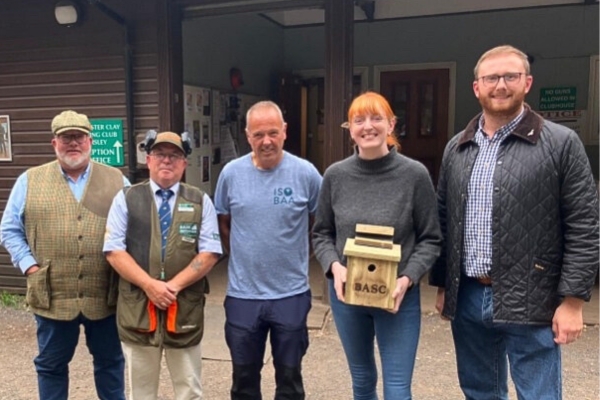
Record your BASC duck nest monitoring project findings
Whip out your notebook and start recording your duck nest tube findings to win a great piece of kit.
Get information on the legal shooting season for mammals and birds in the UK.
Apply for funding for your project or make a donation today
Comprehensive information and advice from our specialist firearms team.
Everything you need to know about shotgun, rifle and airgun ammunition.
Find our up-to-date information, advice and links to government resources.
Everything you need to know on firearms law and licensing.
All the latest news and advice on general licences and how they affect you.


Tawny owls are generally dappled chestnut-brown in colour, with a round head and big, round, black eyes facing forward, and the females are a bit larger than males. This colouration makes them tricky to spot up in the canopies, but their vocalisations often betray their localisation.
They are especially vocal during late autumn and winter months, looking for mates before their breeding season kicks off early in the year.
You can often hear them after dark in parks, woodlands and rural areas around the UK, minus Ireland and offshore islands such as the Isles of Man and Wight, as well as the Outer Hebrides, Orkney and Shetland. It is thought tawny owls dislike crossing large bodies of water, which is why they are only found on mainland UK.
Deciduous, broad-leafed woodlands are preferred, but they can also be found among conifers, as well as large rural or suburban gardens.
Tawny owls mainly prey on small mammals, such as mice and voles, but they also take small birds, amphibians, insects and even earthworms. They are intelligent and opportunistic and can be seen grabbing goldfish from garden ponds and even bats coming out from their roosts.
Their round head and body and black, round eyes make them unmistakable.
Their calls are completely unique, too, and easy to identify.


In 2015, the tawny owl was moved onto the amber list of Birds of Conservation Concern. Long-term population decline has been a concern, mainly due to habitat loss, persecution and use of pesticides on their core prey species.
This prompted the BTO to undertake a survey, which was completed in 2019.
While tawny owls usually nest in tree holes, they do readily take to nest boxes too.
BASC North has been running a bird nest box scheme, for a number of years, while the owl and kestrel nesting boxes are a new venture that launched in 2020. It is primarily aimed at barn owl and kestrel recovery, but these boxes can be used by a multitude of owl and raptor species.
BASC North has donated boxes to local shoots as part of their conservation program and are planning to install some at a couple schools and at a wood managed by a local environmental charity. If you would like to discuss the project, or need advice on nest box plans, please contact BASC North here hyperlink to BASC North page
You can find tawny owl nest box plans on the BTO website too.
Once paired up early in the year, tawny owls stay on their breeding territories for the whole year, guarding it from any unwanted visitors with warning calls and even visual displays. The eggs can be laid very early, from February onwards.
Interestingly, tawny owls start incubating as soon as the first egg has been laid, which leads to ‘asynchronous’ hatching – this means chicks won’t hatch at the same time. This helps the owls ensure the survival of at least one chick. They usually lay clutches of 2 to 3 eggs and incubation takes 30 days.


Whip out your notebook and start recording your duck nest tube findings to win a great piece of kit.

Each year, we draw a prize winner for BASC’s duck nest monitoring project to recognise the efforts of our members in supporting wild duck populations.

Charlotte Nichols MP visited Manchester Clay Shooting Club with BASC to see first-hand how shooting contributes to sport, conservation and rural economies.